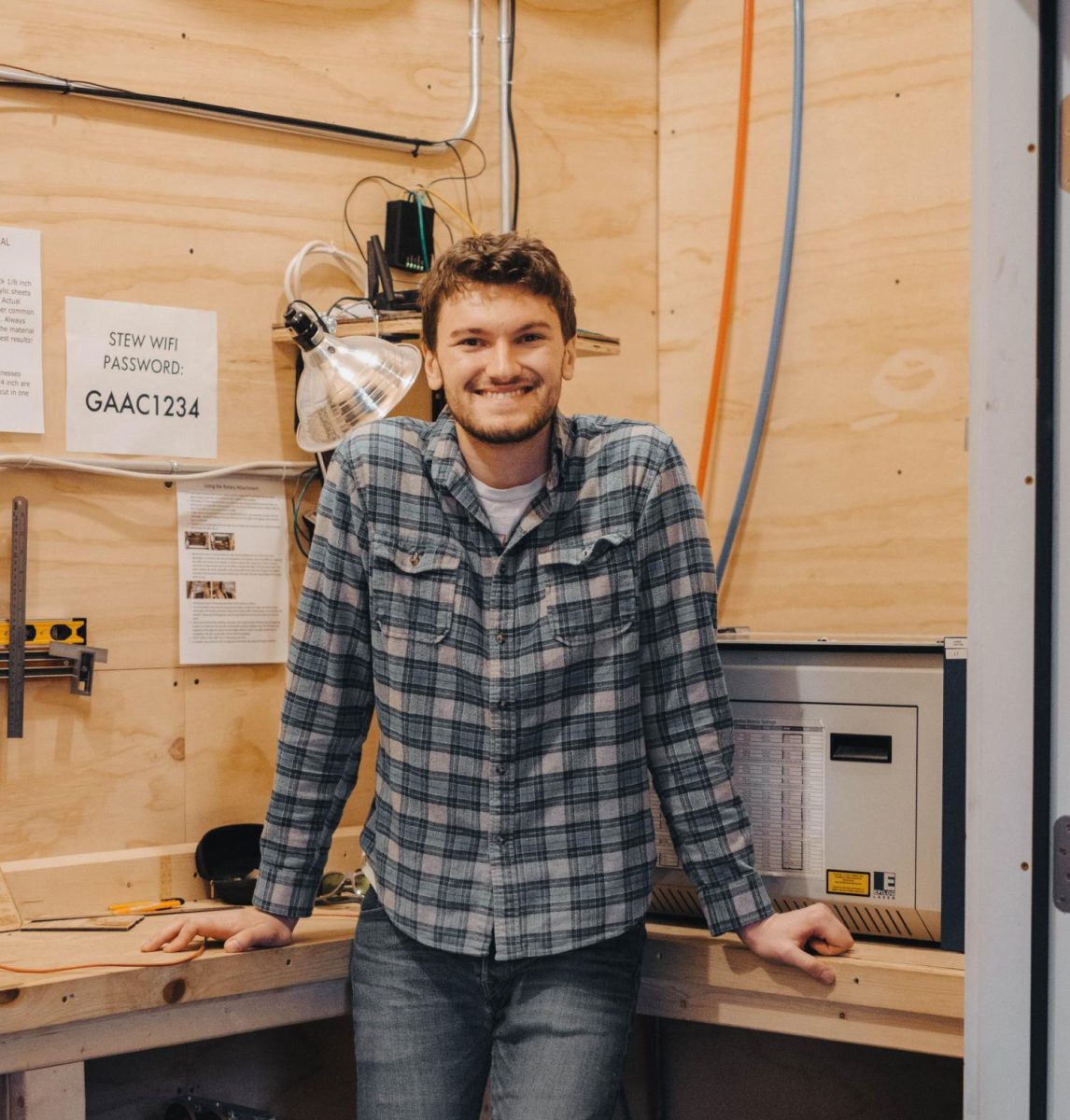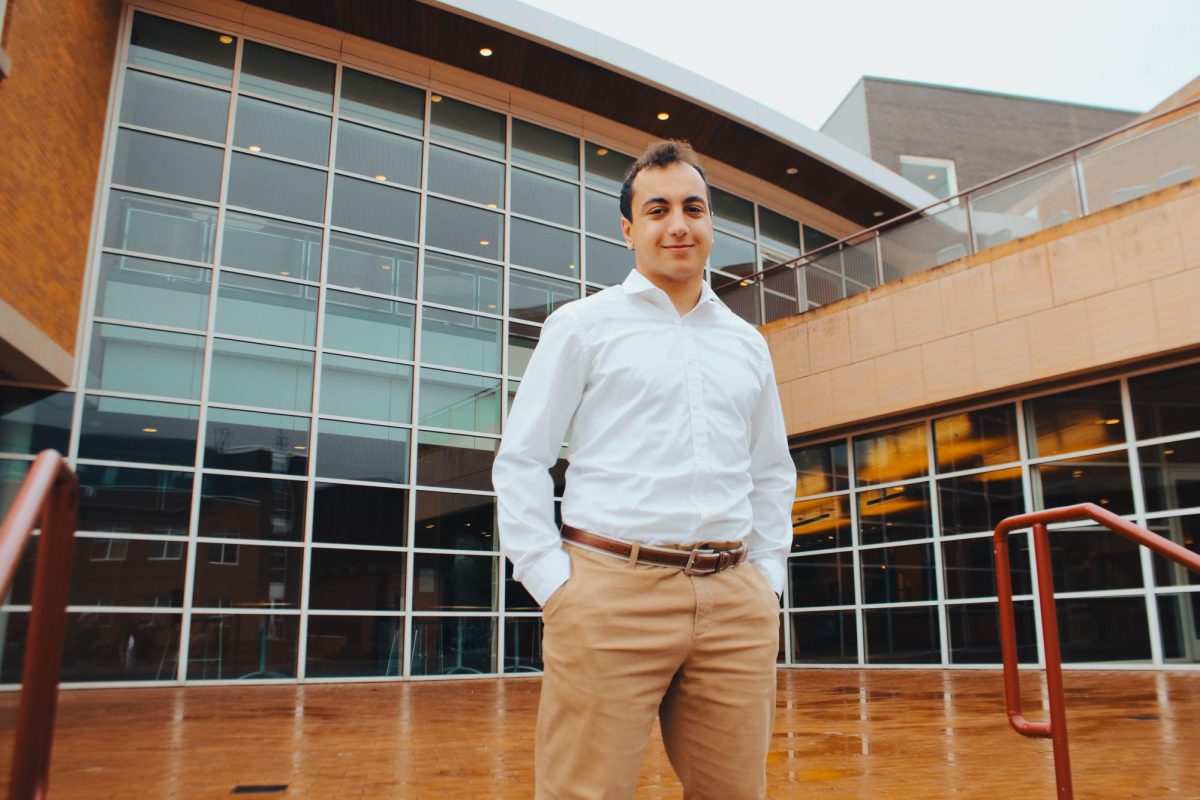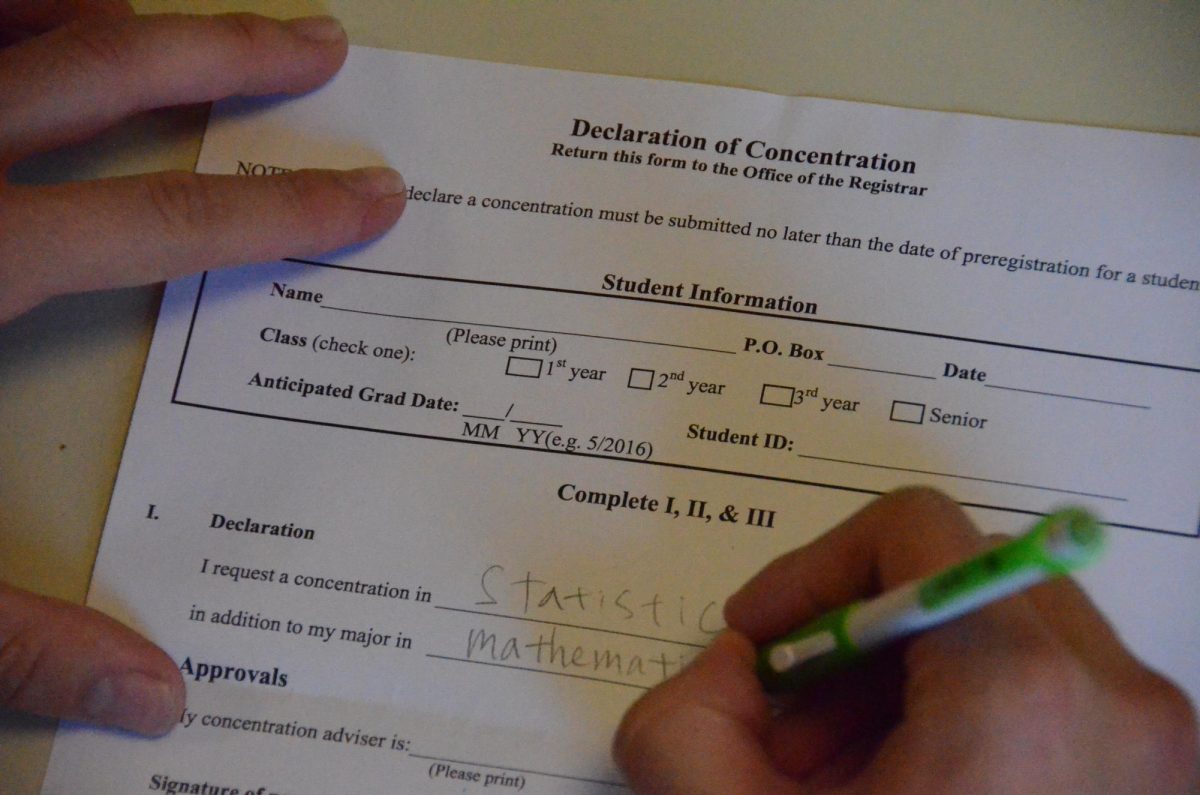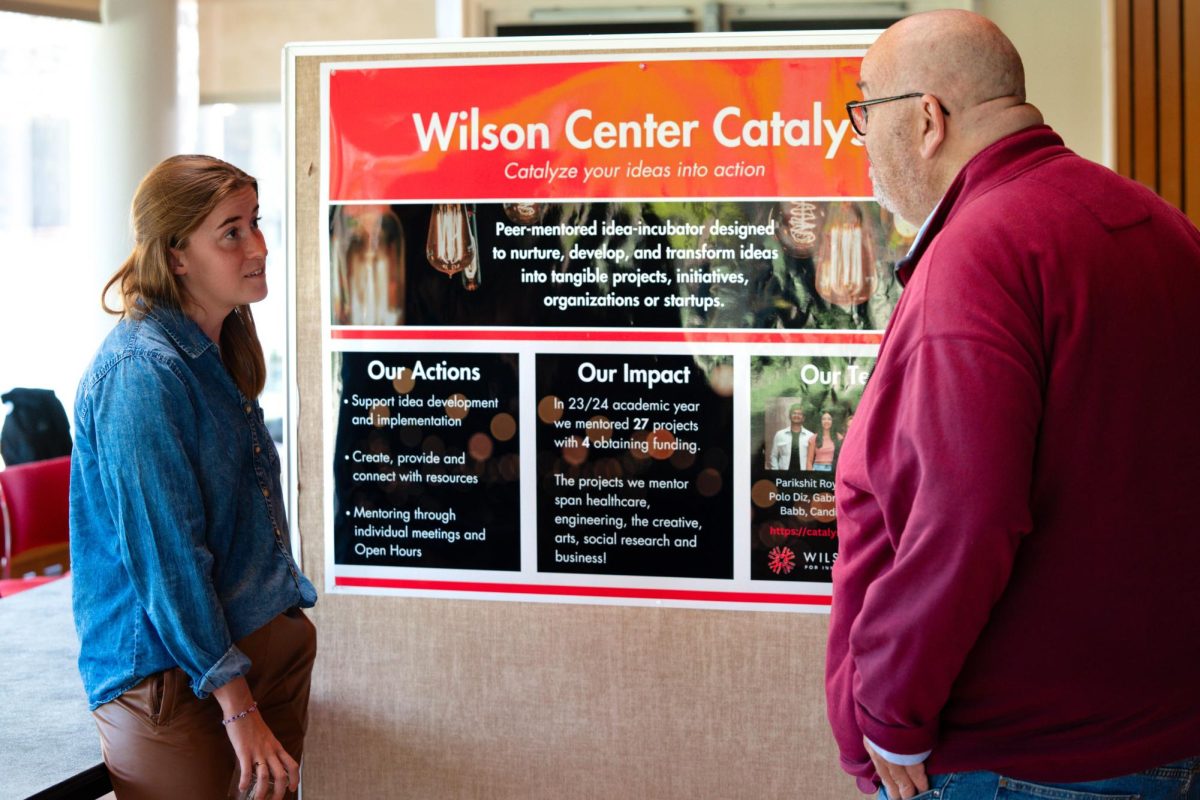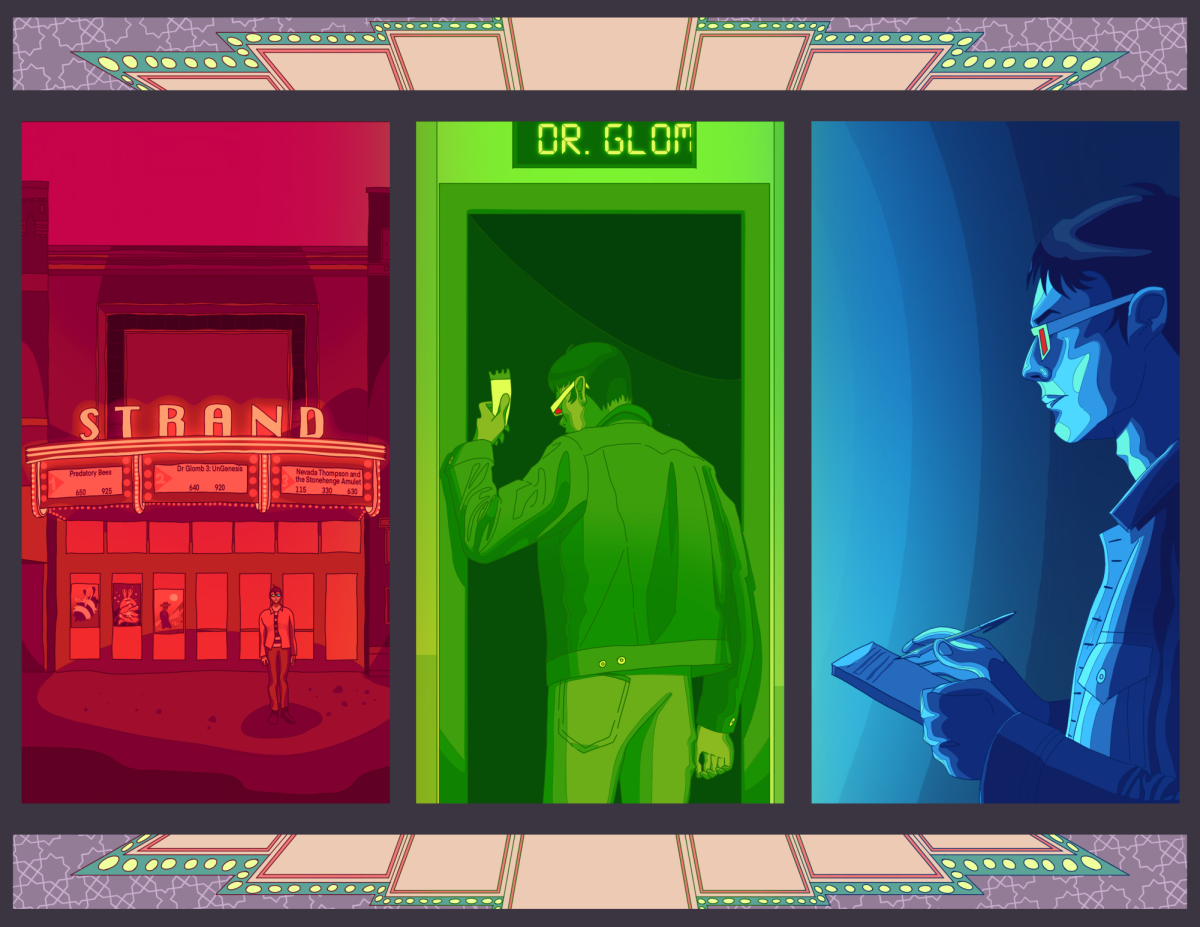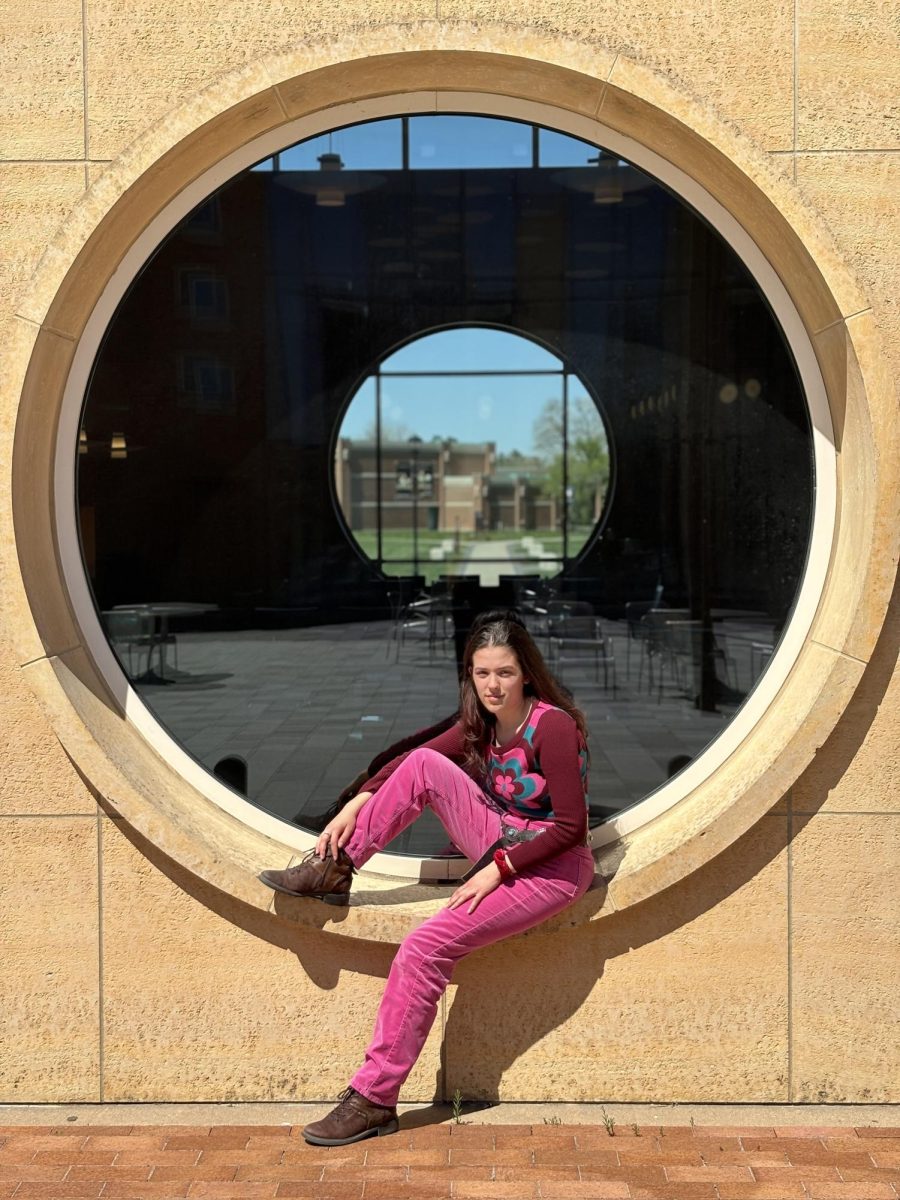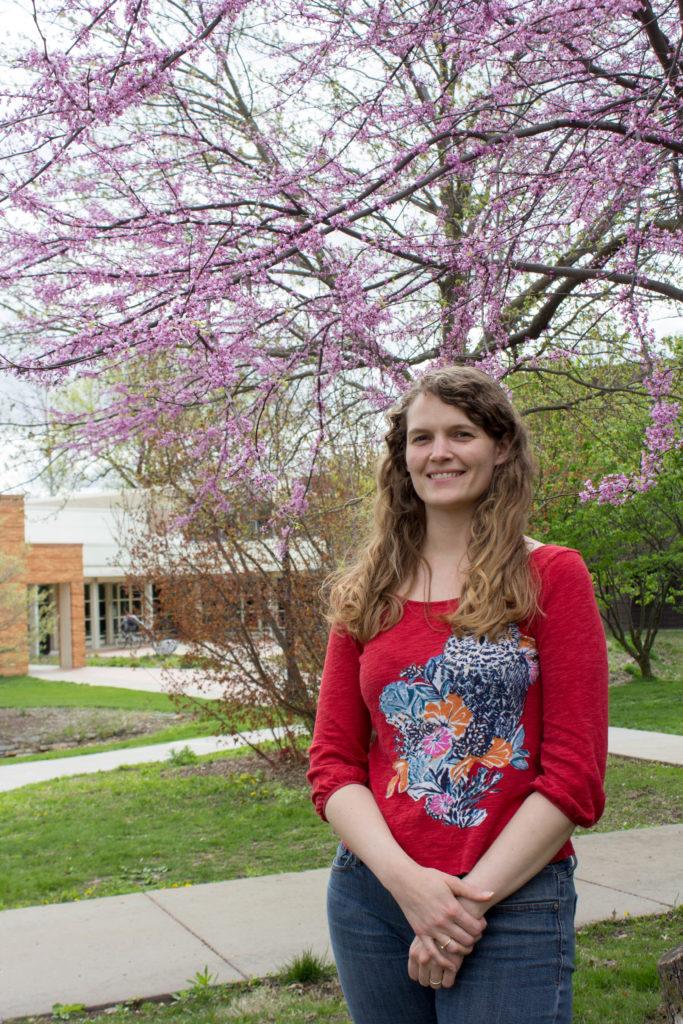By Andrea BaUmgartel
baumgart1@grinnell.edu
Professor Charlotte Christensen, physics, researches the universe. Literally.
“Broadly, I am interested in how galaxies evolve,” she said.
Professor Christensen just recently received a grant from the College which will allow her to spend all of next year doing full-time research on the evolution of galaxies—investigating how they end up having the shape, color and star formations that we observe today.
“I approach this computationally to model the galaxies in the universe, from soon after the Big Bang to the present day. I study how the galaxies transform over time and what processes drive that transformation,” she said.
This is a really big field—in both the scientific community and the community of the universe.
“What I’m interested in, at the moment, is how gas is accreted onto galaxies and how it is lost,” Professor Christensen specified.
The gas comes in via the “intergalactic medium,” or the physical space between galaxies comprised of a lot of hot gas. “But we don’t yet know how much gas [is coming in] or in what state,” Professor Christensen said. “We also know that gas is expelled from galaxies. So when stars form, you will have occasionally a massive star that forms, which have shorter lifespans … And when they die, they release a lot of energy in the form of a supernova. What that energy can do is create a shockwave that pushes gas out of the galaxy, heats it up,” she said.
As the gas comes in, a star forms and creates a feedback loop expelling more gas. “So I’ve been looking at some simulations of galaxies to try to track as gas enters and as it exits and determine the state it’s in as it enters and exits.”
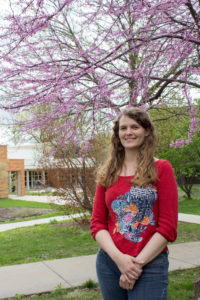
Additionally, Christensen tracks the chemical composition of gasses in the universe. Because the universe was formed with just hydrogen and helium, and only the heavier elements have been created through stars, she can examine the chemical composition of a particular gas. If the gas has an element like carbon, that means the gas used to be in a galaxy.
The key to Professor Christensen’s computational simulations code involves gravity, which “drives the vast majority of stuff happening—it brings gas together and collects dark matter,” she said.
Additionally, gas radiates away energy and then cools down, becoming more dense — or, conversely, it can heat up, become less dense and less likely to remain at the center of a galaxy. So gas cooling and heating is another big player.
The third main component in the code are the stars.
“For stars, we’re interested in how likely it is that a star will form and then after it’s formed, how long will it live? And if it dies, for instance in a supernova, how much energy and how many heavy elements is it ejecting?” Christensen said.
Therefore, Professor Christensen’s computations also include information on the stars’ formation as well as their life cycle.
Some of what Professor Christensen and others are trying to answer is why different types of galaxies differ in their gas and star compositions. For example, the massive elliptical galaxies don’t have much, if any, recent star formation. On the other hand, dwarf galaxies and spiral galaxies are more balanced in terms of stuff going in and out.
“Our galaxy, the Milky Way, forms about one solar mass per year,” Christensen said. “We aren’t quite sure how much gas is being accreted or lost, because it’s actually harder to make these measurements from inside a galaxy as opposed to outside of it. But we think that we are ejecting a little bit more gas than is being accreted.”
When asked what she would like more people to know about galaxies, Professor Christensen said there are two main misconceptions.
One is that, when we think of galaxies, we just tend to think about their stars because that’s what we can see. But stars are only a tiny fraction of an actual galaxy.
“Most of the mass of a galaxy is in the form of dark matter, which is very mysterious and seems to only interact through gravity—we can’t detect light coming from it or being blocked by it. And then, after the dark matter, in many galaxies, there’s more gas than there are stars—stars are just these little tracers,” Christensen said.
Although stars are just a tiny fraction of the actual galaxy, when the massive ones become supernovae, they cause the galaxy to undergo huge conformational change.
“Supernova can alter the entire history of a galaxy,” Christensen said.


